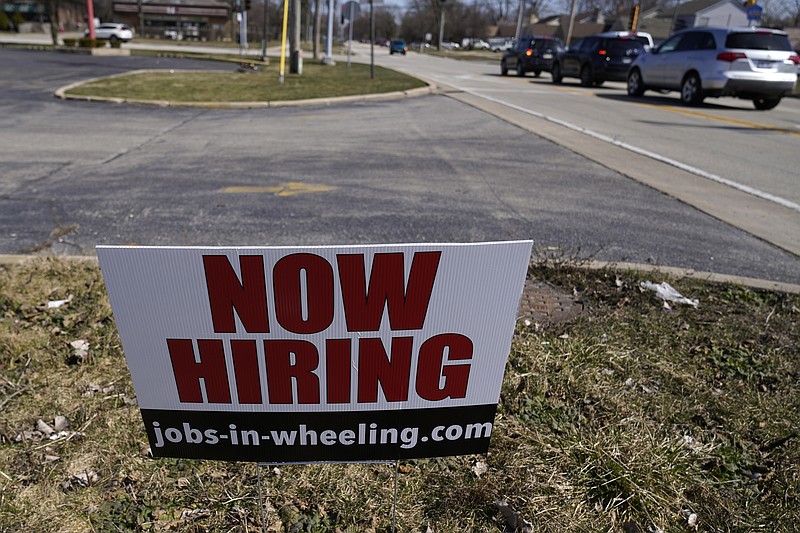WASHINGTON -- Wages and benefits grew quickly for U.S. workers in the first three months of the year, a sign that businesses are starting to offer higher pay to fill newly opened jobs.
U.S. workers' total compensation rose 0.9% in the January-March quarter, the largest gain in more than 13 years, the Labor Department said Friday. That's up from 0.7% in the final three months of last year. Still, the increase is just barely above 0.8% gains in two quarters in 2018.
The solid rise comes after weaker increases during the pandemic, when the unemployment rate initially shot to nearly 15% before declining steadily to 6% in March. As a result, workers' pay and benefits rose just 2.6% in the year ending in March, down from 2.8% a year earlier.
The data comes from the Labor Department's Employment Cost Index, which measures pay changes for workers who keep their jobs. Unlike some other measures of Americans' paychecks, it isn't directly affected by mass layoffs such as the pandemic job losses that occurred last spring.
[CORONAVIRUS: Click here for our complete coverage » arkansasonline.com/coronavirus]
The figures suggest that as the economy is reopening and more Americans are willing to venture out to restaurants, bars and shops, businesses are having to provide higher pay and benefits to pull workers back into the job market. Many businesses have struggled to find people to take jobs, despite still-high unemployment.
Some Americans are reluctant to take jobs in industries like restaurants, hotels and bars for fear of contracting the coronavirus. Others, particularly women, are constrained by child care obligations. And a federal supplement to unemployment benefits of $300 a week may be keeping some unemployed on the sidelines. That benefit ends Sept. 6.
Wages and salaries rose 1% in the first three months of the year, the Employment Cost Index showed, while benefits such as health insurance increased 0.6% in value.
Hotels and restaurants increased pay and benefits by 1.5% in the first quarter, as many businesses in those industries have had a hard time finding workers. Total compensation jumped 3.6% in the financial services industry.
Overall personal incomes grew by a record amount in March, according to a separate Commerce Department report Friday, bolstered by $1,400 government stimulus checks and unemployment aid to roughly 18 million Americans. Incomes soared 21.1%, mostly attributed to billions of dollars in pandemic relief payments with individuals getting up to $1,400 payments from the $1.9 trillion federal aid package.
The Commerce Department also said consumer spending rose 4.2% in March, the best showing since a 6.5% spending increase in June.
Information for this article was contributed by Martin Crutsinger of The Associated Press.

